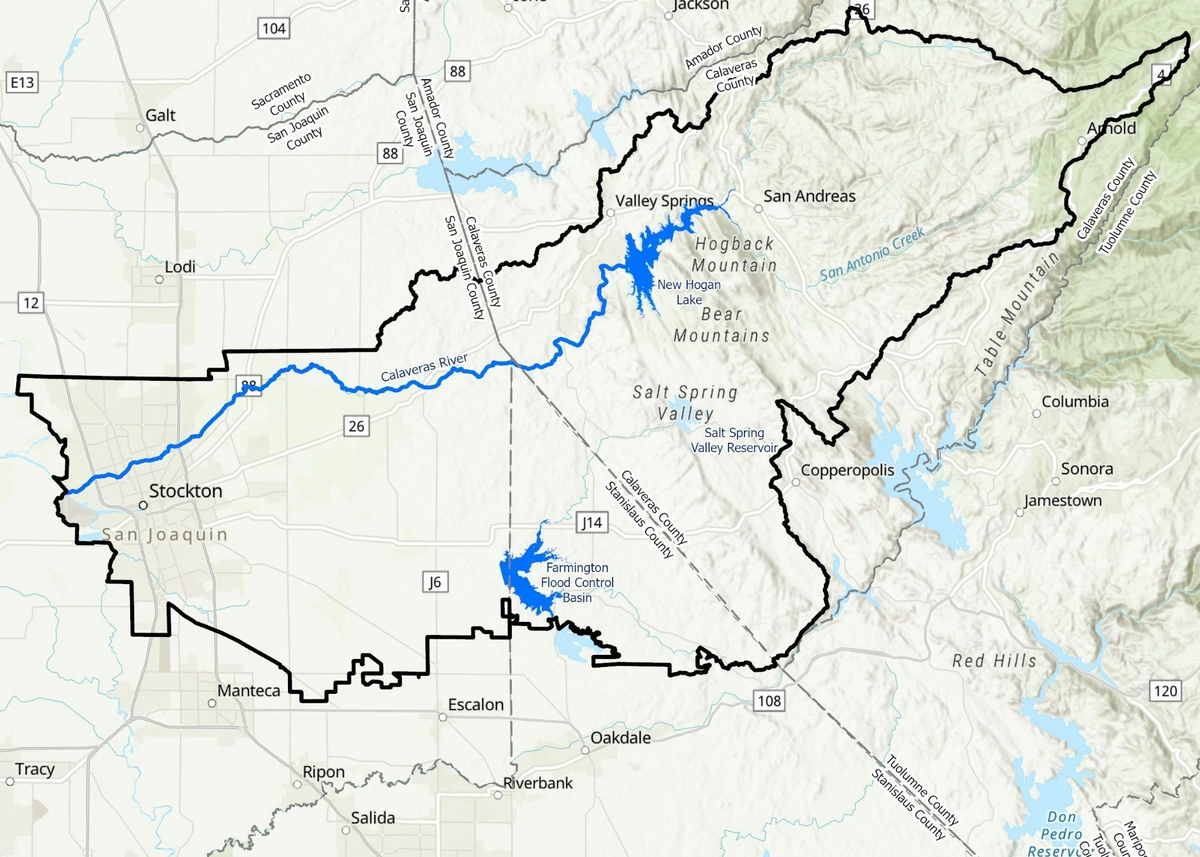The Calaveras River watershed was selected by the California Department of Water Resources (DWR) as one of five watersheds to participate in the Watershed Resilience Program designed to pilot the planning of climate resilience at a watershed scale. The Watershed Resilience Program will advance the vision and framework described in the California Water Plan 2023 by providing financial and technical support to improve regional resilience. This important work will lay the foundation for future efforts within the Calaveras watershed and throughout the state of California.
The Calaveras River watershed includes portions of the counties of San Joaquin, Stanislaus, and Calaveras counties. The Calaveras River Watershed Resiliency Plan will help build regional resilience through multi-benefit projects, integrated resource management, and nature-based solutions with a focus on equity. This will be accomplished through a robust outreach and engagement process to foster collaboration, analyze and assess climate vulnerabilities and risks, develop adaptation and implementation strategies, and track performance against set metrics. The Watershed Resiliency Plan will incorporate feedback from a wide-ranging group of stakeholders known as the Watershed Network, ensuring a Plan that is inclusive of interests and perspectives from across our diverse watershed.
The Project Team (SEWD and CCWD) will work with participants in the Watershed Network to develop a collective vision for the watershed and goals for the Plan. The Watershed Network will play a critical role in providing feedback and helping guide the process. To participate in this process, please click below.
The Calaveras River Watershed Network is a structure that organizes stakeholders and interested parties for the Watershed Resilience Plan. We will look to the Watershed Network to support development of the plan by particiating in workshops, meetings, and online engagement opportunities.
A series of six online discussions are planned through the duration of the project. You can learn more about these discussions here.
Virtual Opportunities to Participate: Join us for a community discussion about the Calaveras River Watershed Plan. For updates on opportunties to particpate, please complete the form on Contact Us page. We will hold virtual workshops or you can also participate on your own schedule as the presentations become available.
Early 2025
-
Create Watershed Vision
Spring 2025
- Assess Climate Vulnerability and Watershed
Summer 2025
-
Early Summer 2025: Assess Vulnerability and Risks
-
Summer 2025: Develop Adaptation Strategies
Spring 2026
-
Develop Performance Tracking Approach
Fall 2026
-
Finalize Watershed Resilience Plan

